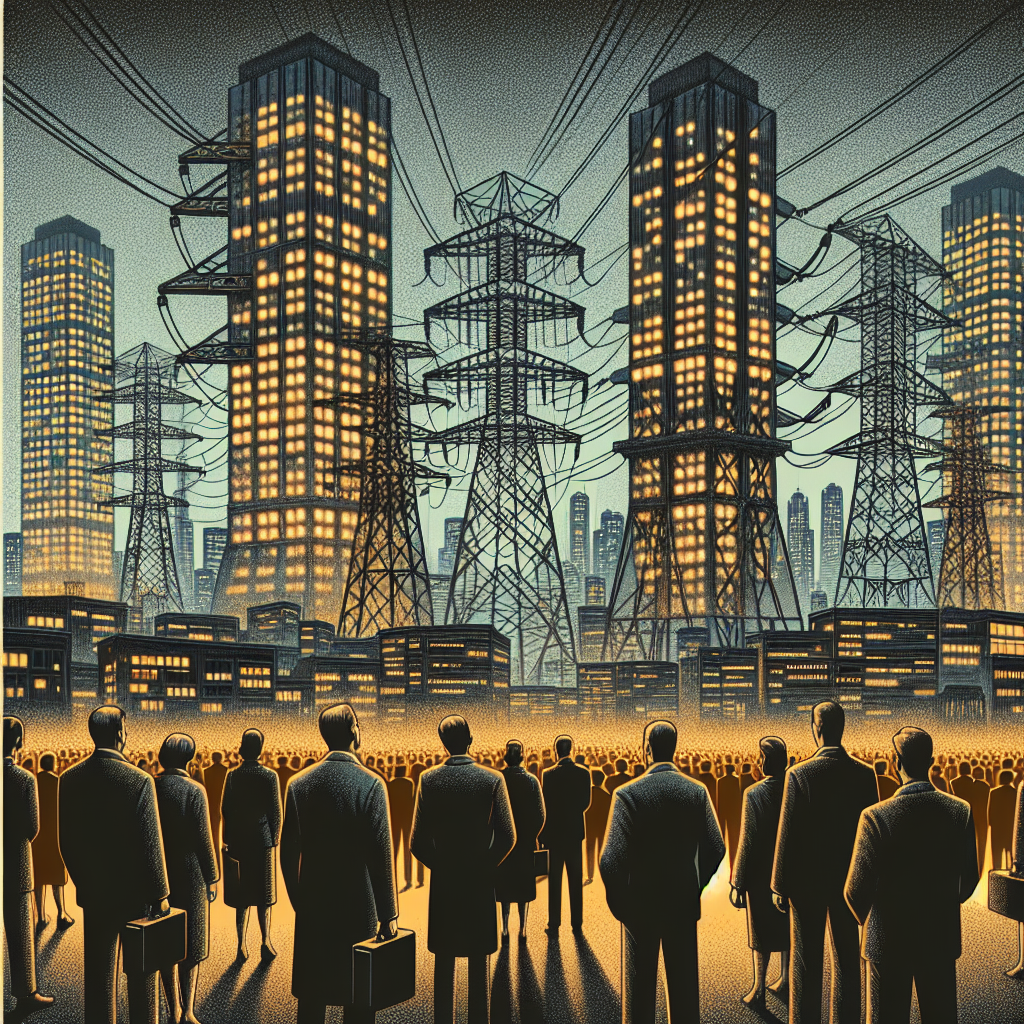Homeowners across the United States are expressing growing concern over the persistent rise in electric bills, a trend that has continued even as overall inflation has cooled since its 2022 peak. While many Americans have felt some relief in areas such as food and fuel prices, electricity costs have remained stubbornly high, straining household budgets and fueling calls for urgent action. The challenge is compounded by slow wage growth, making it increasingly difficult for families to absorb rising utility expenses.
According to experts, the cost of electricity has increased by approximately 29% since 2020. Analysts point to the surging demand from data centers, which are critical infrastructure for technologies including artificial intelligence and cloud computing. In 2022, data centers consumed roughly 4% of all electricity generated in the United States — a number that could climb to 6% by 2026. The International Energy Agency projects that by then, data centers in the U.S. could use more electricity annually than an entire nation the size of Sweden, which has a population near 11 million.
This ballooning energy demand has not been matched by growth in domestic electricity generation. As a result, both homeowners and businesses are seeing their electricity bills climb sharply. Because electricity is essential for modern life, most households have limited ability to cut usage below a certain level without negatively impacting quality of life.
Recent reports underline the scale of the challenge in specific regions. In Indiana, a 2025 analysis by the Citizens Action Coalition found that residents saw an average increase of $28 per month on their electricity bills — a 17.5% jump from the previous year. NIPSCO customers bore the brunt, suffering nearly $50 in monthly increases, representing a 26.7% hike. CenterPoint Energy bills climbed by $44 a month, while Duke Energy Indiana’s customers faced nearly $26 more each month.
Illinois is also feeling the pressure. Ameren Illinois announced that starting June 1, 2025, its customers would experience increases ranging from 18% to 22% — equating to about $45 more per month for typical users. These hikes are partly attributed to pricing changes by the regional power grid operator, further highlighting the complex factors behind rising rates.
In Muhlenberg County, Kentucky, the situation has sparked frustration after new meter installations led to sudden, exorbitant bills. Several families in the area reported increases of $1,000 in a single month, despite unchanged consumption levels, prompting community concern and demands for transparency from utilities, as reported by local news outlets.
The pattern is pronounced nationwide. Since 2019, U.S. electricity prices have gone up by roughly 28.5%. Some states have experienced even sharper increases; major California utilities, for example, have hiked rates by as much as 110% over the past decade, according to My Journal Courier. The intensified demand, attributed not just to data centers but also the growing popularity of electric vehicles and electrification in buildings, has outpaced supply-side growth, driving prices upwards.
Consumer advocates and energy analysts are urging both policy and market responses. Proposals include requiring companies that build new data centers to fund additional power generation, particularly from renewables, and expanding incentives for clean energy projects. Some stakeholders are pressing lawmakers to prioritize swift investment in renewable infrastructure as a means to both meet growing demand and stabilize costs. Andy McCabe, a policy analyst with the Citizens Action Coalition, told WFIU Public Media that utilities and regulators must better balance needed infrastructure spending with consumer affordability.
At the individual level, consumers are considering home-based solutions, such as increasing energy efficiency and installing rooftop solar panels. Federal tax credits and other incentives currently help reduce the up-front cost of solar installations, but such programs could be reduced or eliminated in the future, prompting a sense of urgency for homeowners looking to reduce their reliance on the grid.
Experts widely agree the upward trajectory in electricity prices is unlikely to reverse without substantial new investment in power generation, particularly from renewable sources. As noted in a recent Yahoo News article, advocacy for policy reform, adoption of new energy technologies, and consumer engagement will be critical to achieving more affordable and stable rates in the years ahead.




